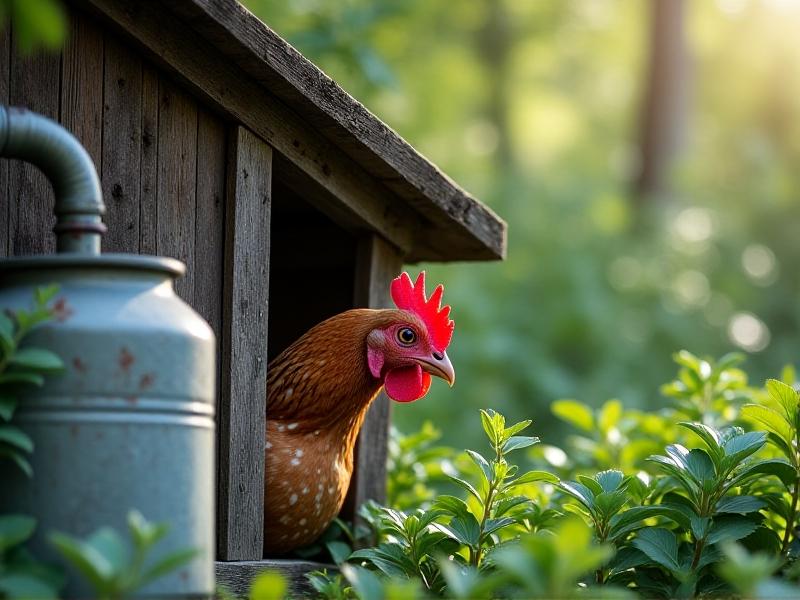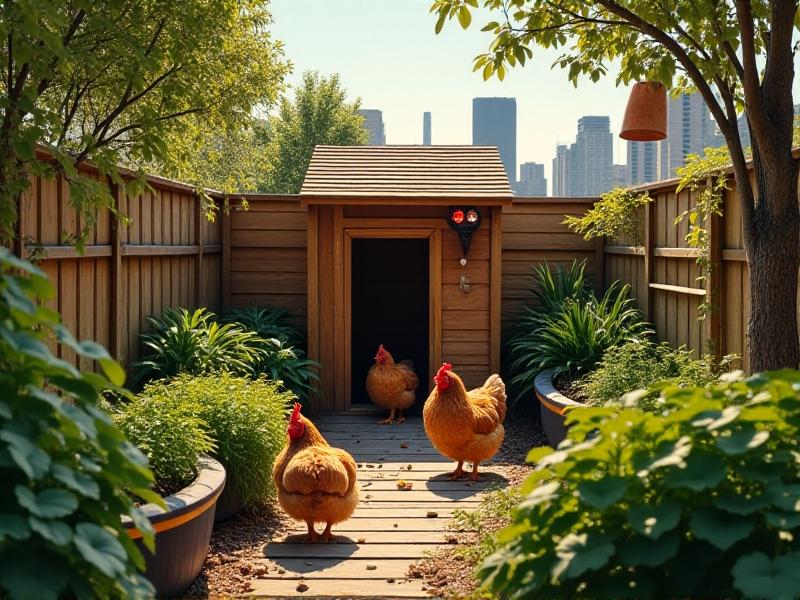City Ordinances 101: Navigating Legal Requirements for Urban Chickens
Understanding Local Zoning Laws and Urban Chicken Policies

Before building a coop or purchasing chicks, understanding your city’s zoning laws is critical. Zoning regulations determine where chickens can be kept, often restricting them to specific residential or mixed-use areas. For example, some cities prohibit poultry in densely populated neighborhoods but allow them in zones with larger lot sizes. Research your municipality’s zoning map—often available online—to confirm whether your property falls within a permitted area. Proximity rules, such as required distances from property lines or neighboring homes, are also common. In Portland, Oregon, coops must be at least 10 feet from residences, while Austin, Texas, requires only 50 feet from neighboring doors or windows. These rules aim to balance urban agriculture with community comfort. Reach out to your local planning department for clarity, as outdated online documents might not reflect recent ordinance changes.
Permits and Licensing: Navigating Bureaucratic Requirements

Many cities require permits or licenses to keep chickens, ensuring compliance with health and safety standards. Applications often involve submitting coop blueprints, detailing flock size, and paying fees ranging from $25 to $200. For instance, Seattle mandates a $75 annual license for flocks exceeding three hens. Inspections may follow to verify coop security and cleanliness. Some jurisdictions, like Denver, cap hen numbers at six unless additional permits are acquired. Always retain copies of approvals and display permits prominently to avoid disputes. Proactively engaging with animal control or agricultural offices can streamline the process, especially if ordinances are ambiguous. Remember, unpermitted flocks risk fines or forced rehoming.
Coop Design and Placement: Meeting Municipal Standards

City ordinances frequently specify coop materials, size, and ventilation to prevent nuisances. Minneapolis requires coops to have at least 2 square feet per bird, while San Diego mandates predator-proof latches and raised floors. Placement rules often require coops to be 10–25 feet from property lines and hidden from street view. Opt for easy-to-clean materials like pressure-treated wood or metal roofing, and include removable trays for waste. Windows with wire mesh ensure airflow without compromising safety. Elevated designs minimize moisture and deter pests. Including a covered run can satisfy space requirements while protecting birds from weather. Always cross-check designs with local codes before construction.
Managing Noise and Odor: Keeping Neighbors Happy

Roosters are banned in most urban areas due to noise, but even hens can cause complaints. Choose quieter breeds like Silkies or Australorps, and avoid overcrowding. Regularly clean coops and compost manure with carbon-rich materials like straw to neutralize smells. Installing a dig-resistant compost bin away from property lines further reduces odor risks. Proactive measures, such as offering neighbors fresh eggs, can foster goodwill. If complaints arise, addressing concerns promptly often prevents escalation to authorities.
Health and Safety: Complying with Disease Prevention Rules
Local laws often require vaccinations (e.g., against avian flu) and routine vet checks. Coops must be rodent-proof, with feed stored in sealed containers. Some cities mandate reporting sick birds to agricultural offices. Composting guidelines may require manure to be covered or turned weekly. Adhering to these rules protects both flocks and public health.
Engaging with the Community: Building Support for Your Flock
Transparency with neighbors is key. Host a casual meeting to explain your plans and share benefits like pest control. Invite them to tour the coop to demonstrate cleanliness. Establishing a dialogue early can turn potential critics into allies.
Consequences of Non-Compliance: Fines and Legal Risks
Fines for violations can range from $100 to $500 daily. Repeated offenses may lead to animal confiscation or court orders to remove coops. Documenting compliance efforts, like photos of clean coops, can help contest unjust penalties.
Staying Informed: Resources for Ongoing Compliance
Subscribe to city newsletters, join local urban farming groups, and attend workshops to stay updated on ordinance changes. Building relationships with officials can provide early warnings about policy shifts affecting your flock.








